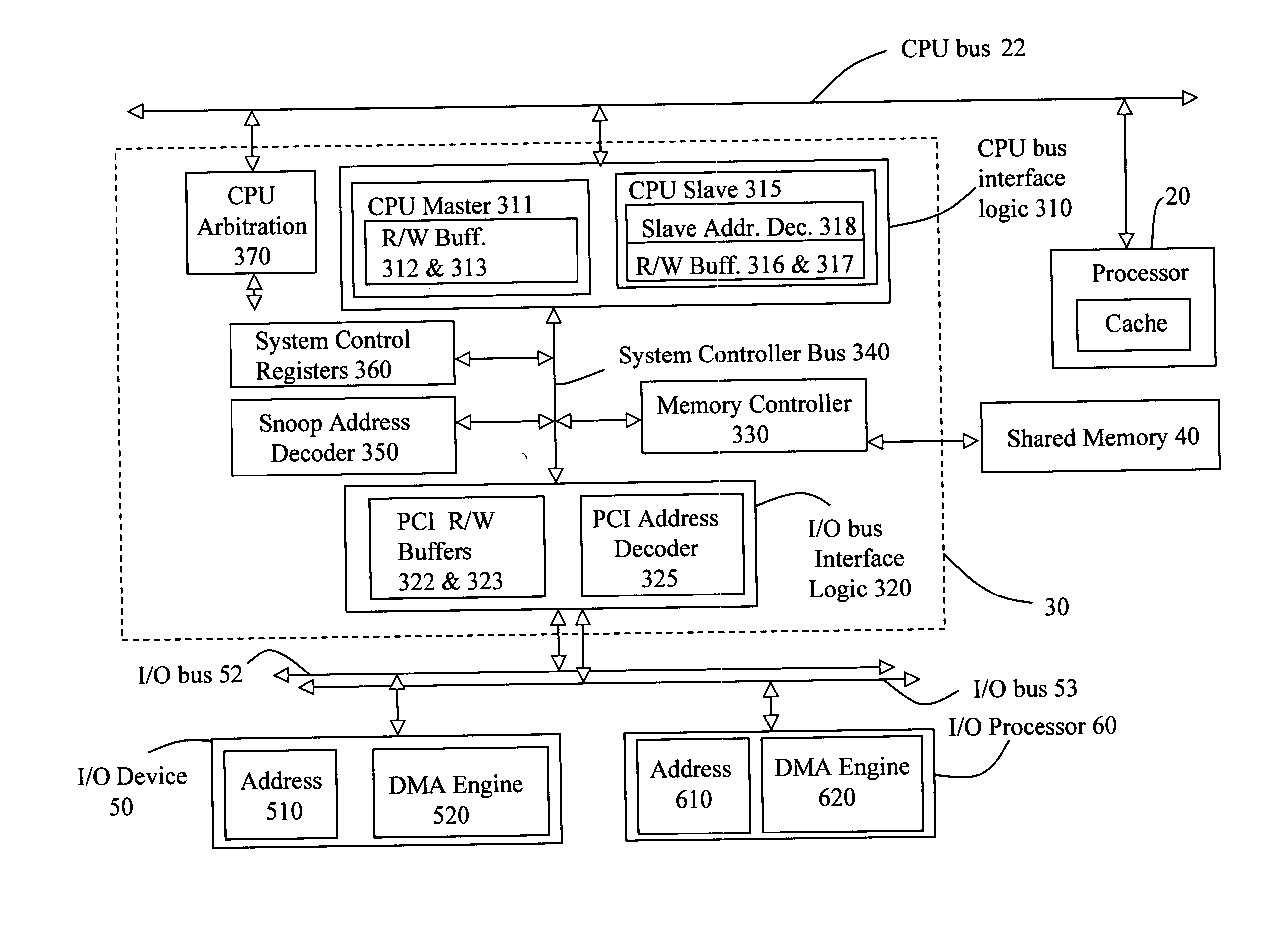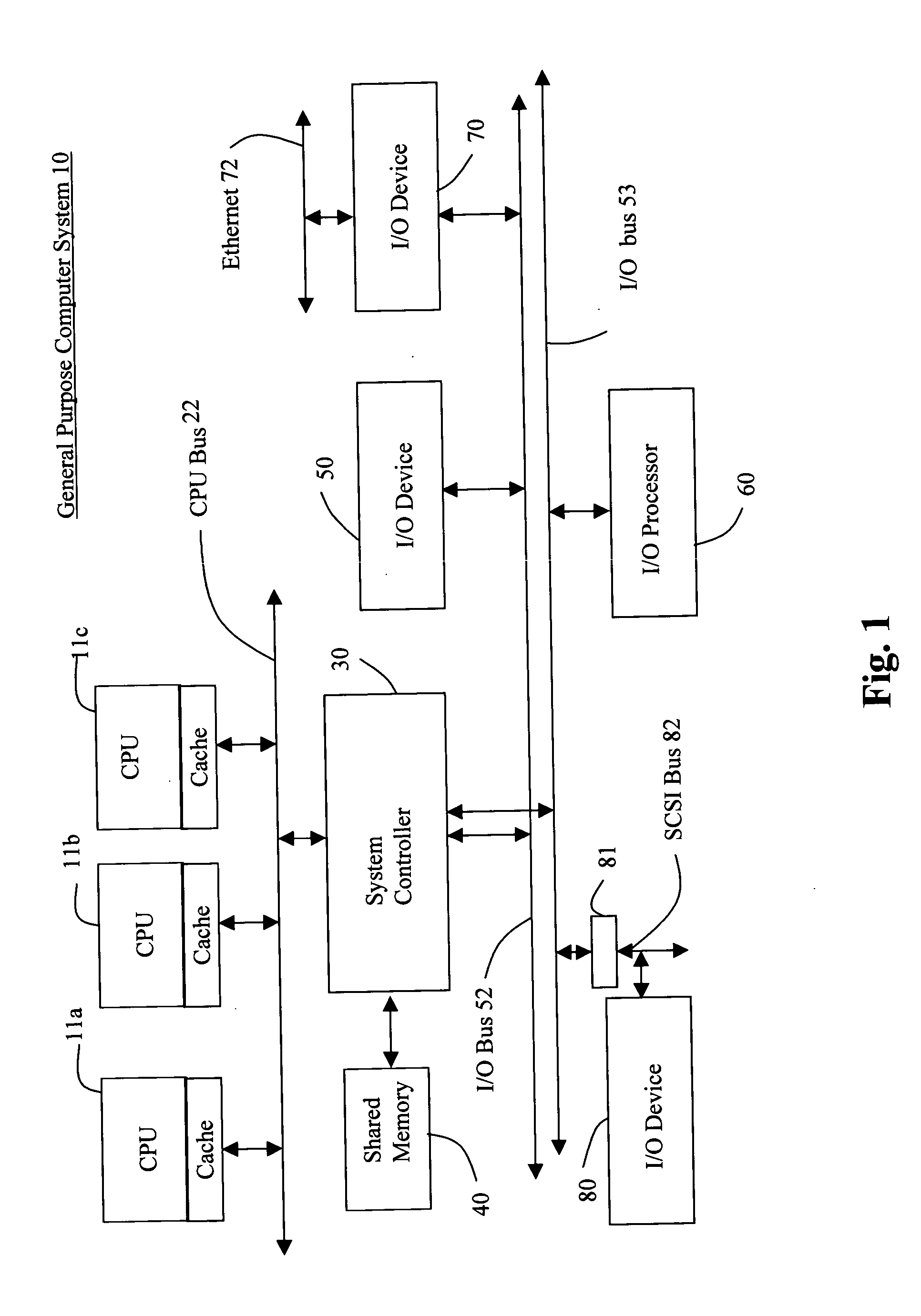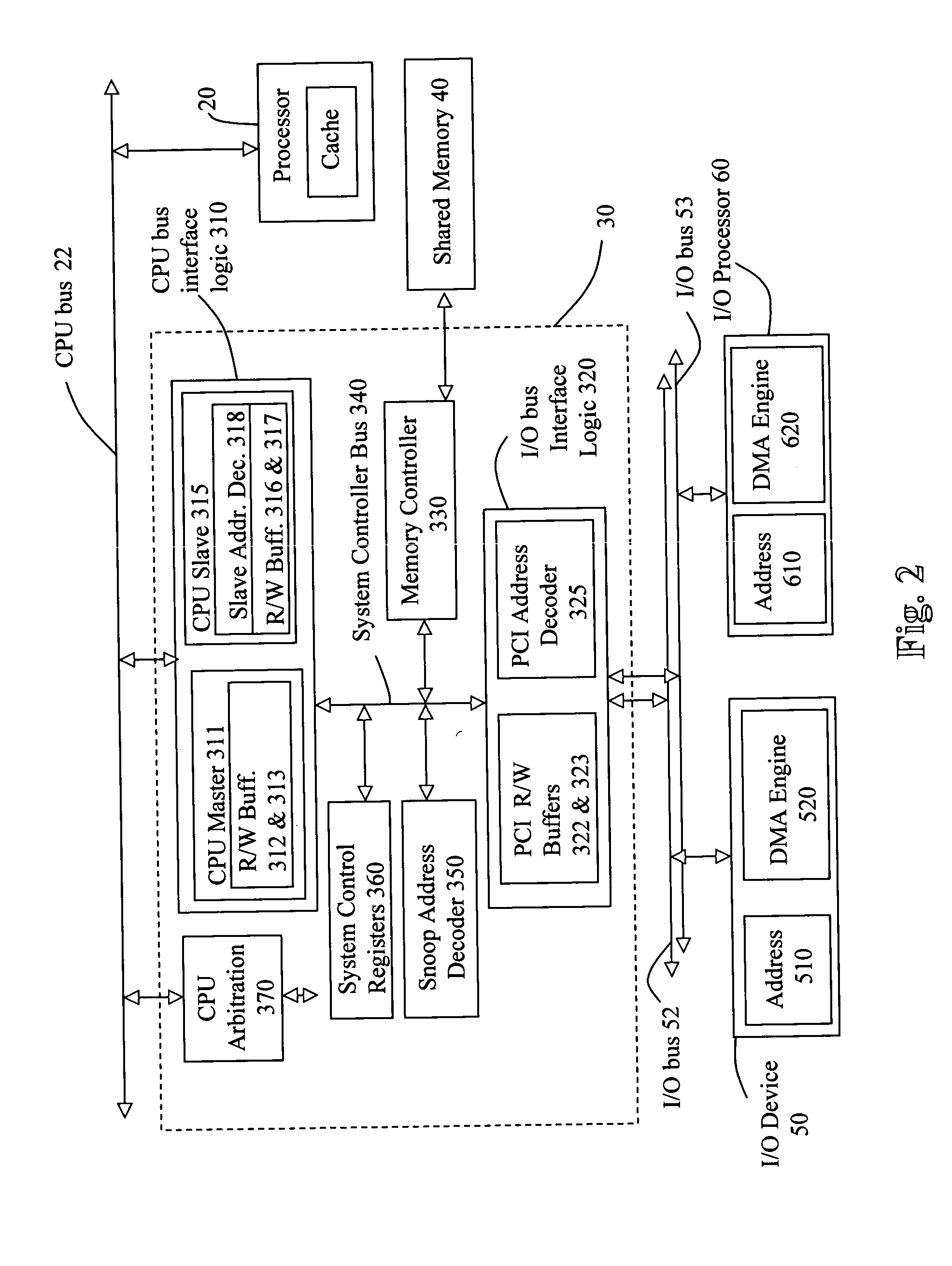Method for efficiently processing DMA transactions
a dma transaction and efficient technology, applied in the field of general purpose computer systems, can solve the problems of inconsistencies in various versions, inability to provide partial cache coherency support for standard i/o devices, and inability to efficiently use the cpu bus, so as to increase the data rate of dma transactions and increase the data rate of certain dma transactions.
- Summary
- Abstract
- Description
- Claims
- Application Information
AI Technical Summary
Benefits of technology
Problems solved by technology
Method used
Image
Examples
Embodiment Construction
[0021]FIG. 1 is a high-level block diagram of a general-purpose computer system 10, hereinafter referred to as the computer system, which can be employed to implement the novel DMA transaction process described by this application. Such a computer system will typically have one or more central processing units (CPUs) 11a, b, and c, and associated cache memory in communication with a CPU bus 22. The CPU(s) enable much of the computer system's functionality. Among other things, they make and compare calculations, signal I / O devices to perform certain operations, and read and write information to memory. The cache associated with each CPU acts as a buffer, local to each CPU, for the storage of a version of data contained in the shared memory 40. Cache provides a mechanism for each CPU to very rapidly access a version of data that is contained in shared memory without using any CPU bus cycles. The CPU could be, for instance, a MPC7410 Power PC processor sold by the Motorola Corporation....
PUM
 Login to View More
Login to View More Abstract
Description
Claims
Application Information
 Login to View More
Login to View More - R&D
- Intellectual Property
- Life Sciences
- Materials
- Tech Scout
- Unparalleled Data Quality
- Higher Quality Content
- 60% Fewer Hallucinations
Browse by: Latest US Patents, China's latest patents, Technical Efficacy Thesaurus, Application Domain, Technology Topic, Popular Technical Reports.
© 2025 PatSnap. All rights reserved.Legal|Privacy policy|Modern Slavery Act Transparency Statement|Sitemap|About US| Contact US: help@patsnap.com



